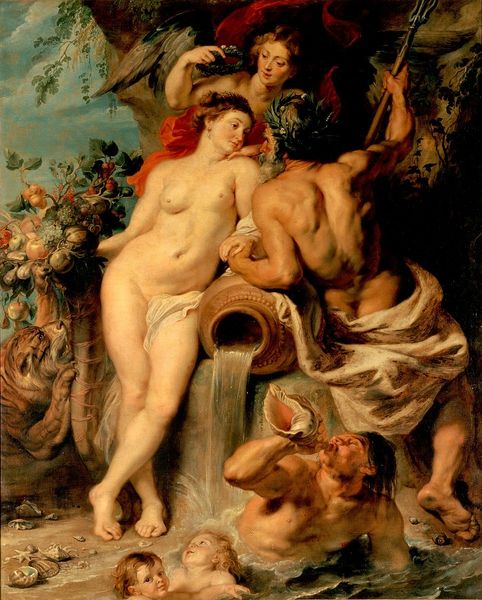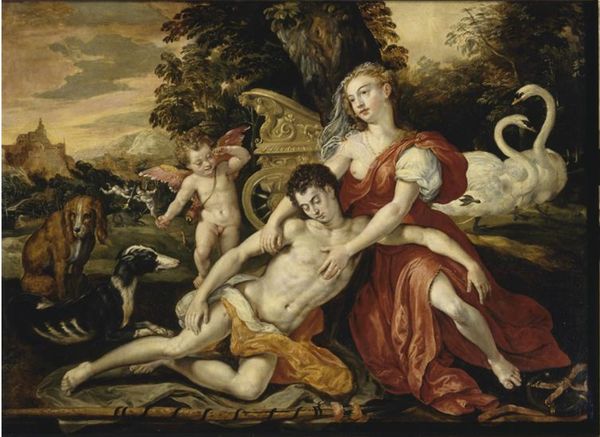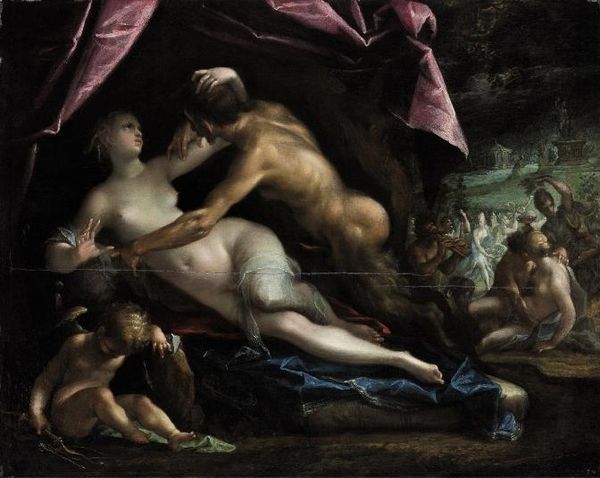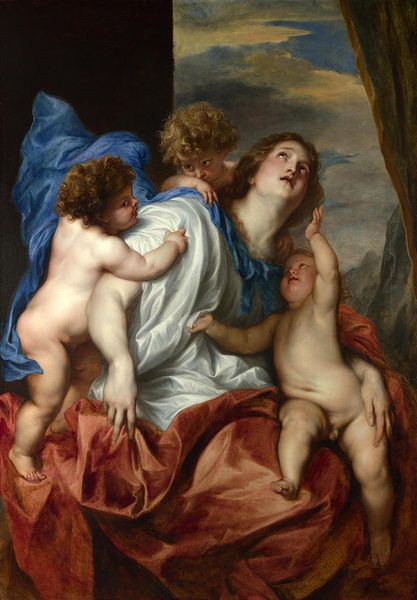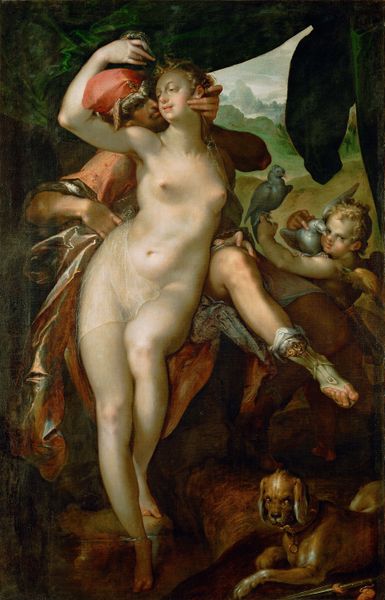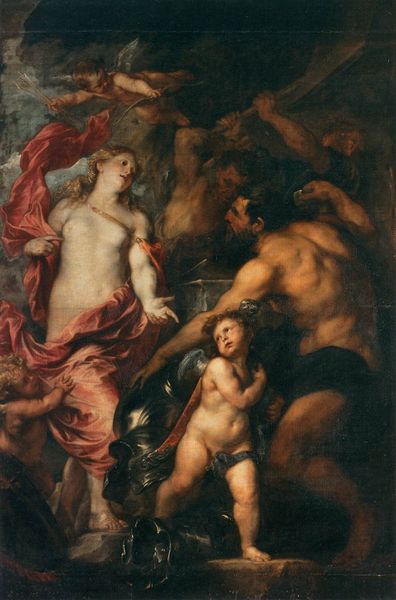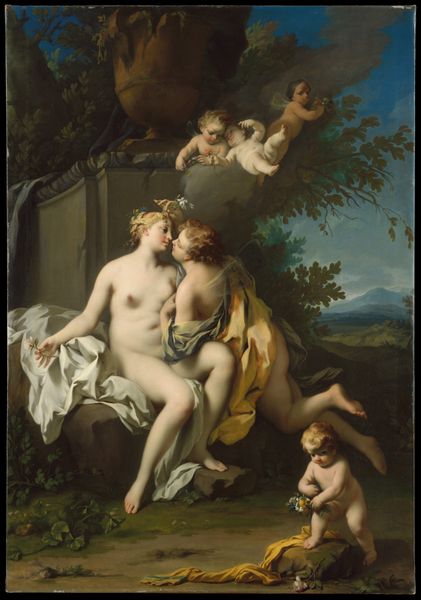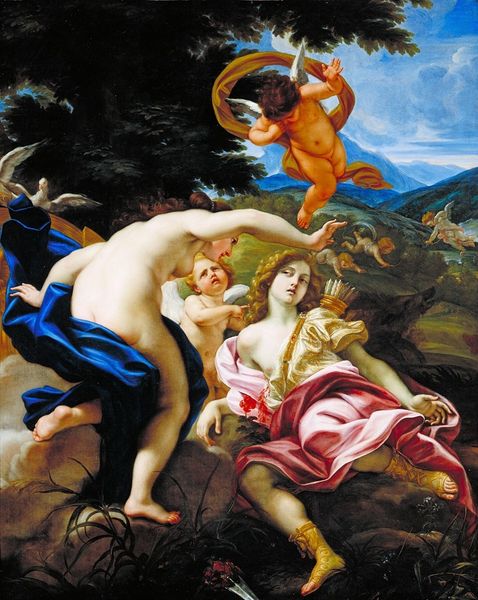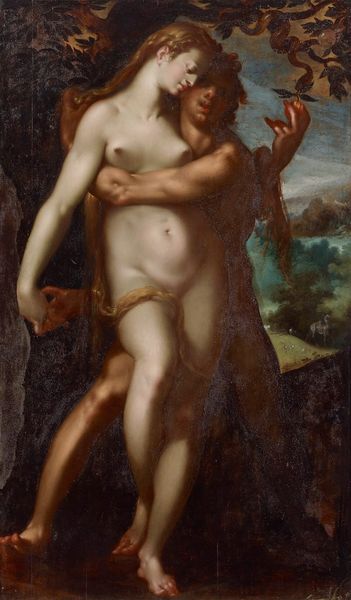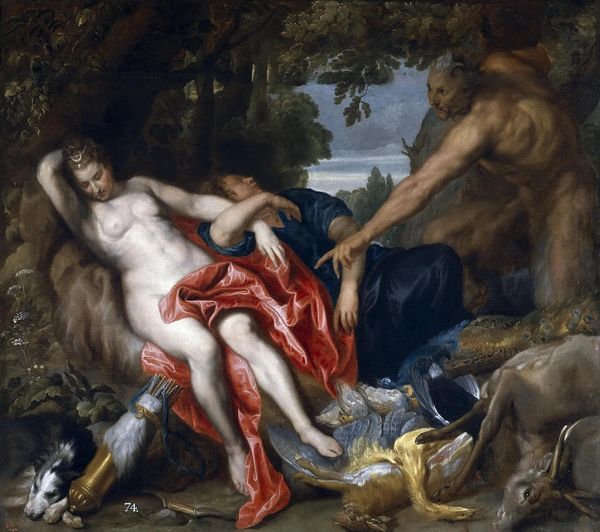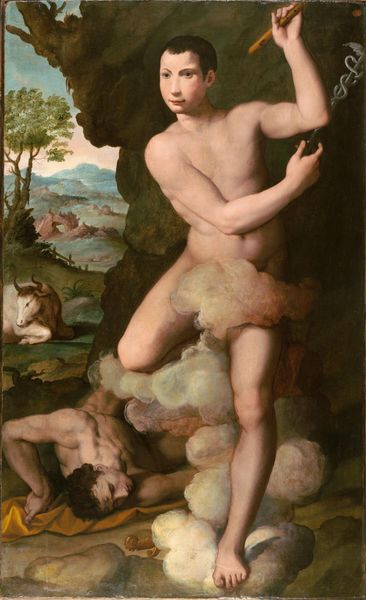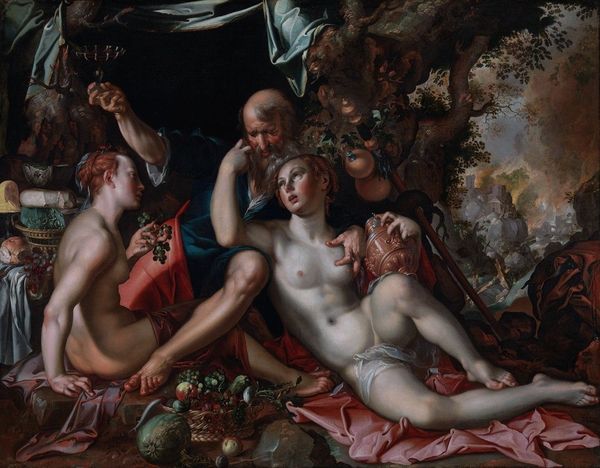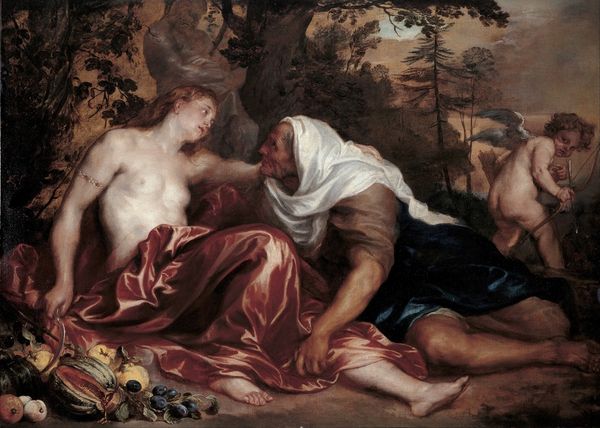
oil-paint
#
allegory
#
oil-paint
#
mannerism
#
history-painting
#
academic-art
#
nude
Copyright: Public Domain: Artvee
Curator: This is "Cephalus and Procris," an oil painting executed around 1595-1600 by the Dutch artist Joachim Wtewael. What are your initial impressions? Editor: Claustrophobic! There's this incredibly tense, compressed feeling in the composition. And look at the colour palette: it seems like a fight between this honeyed light and almost bruised purples and greys. What's the story here? Curator: The piece depicts a tragic moment from Ovid’s Metamorphoses. Cephalus, convinced by rumors, suspects his wife Procris of infidelity. He tests her by disguising himself and seducing her with gifts. Here we see the instant Cephalus reveals his deception. Editor: Right, I'm with you now. You know, it's impossible to look at this without thinking about power dynamics and gender. Procris is caught between vulnerability and violation. The male gaze is inescapable in these mythological paintings. The story really places women as property that can be bought and sold, tested. Curator: And Wtewael captures that struggle visually. Procris's body is so physically present, so...there, but her gaze is directed upwards and away, pleading or questioning, almost disembodied in expression. But the composition also suggests she has literally nowhere else to look or turn to. Editor: Exactly. It's like the visual equivalent of a double bind. The scene is set amid academic-art conventions, but how does it function as allegory? What were viewers in Wtewael’s time supposed to take away? Is it just supposed to be this erotic cautionary tale, or were they prompted to read deeper? Curator: Well, Wtewael's Mannerist style does allow for an ambiguity, a pushing beyond surface. The exaggeration of the figures and colors invite deeper considerations, even a sort of morbid humor, amidst the tension and distress of the subject. Editor: Hmmm, okay, humor may be there too for some viewers. I am mostly getting unsettling tension. Either way, I can’t get past thinking that how we receive a painting like this speaks volumes about how we see these tensions and relationships in our present. Curator: Perhaps that disquiet is a good thing! It keeps these stories, these power imbalances, very much alive and open for re-examination and understanding. We are looking, still, and in ways different to what Wtewael ever conceived.
Comments
No comments
Be the first to comment and join the conversation on the ultimate creative platform.
